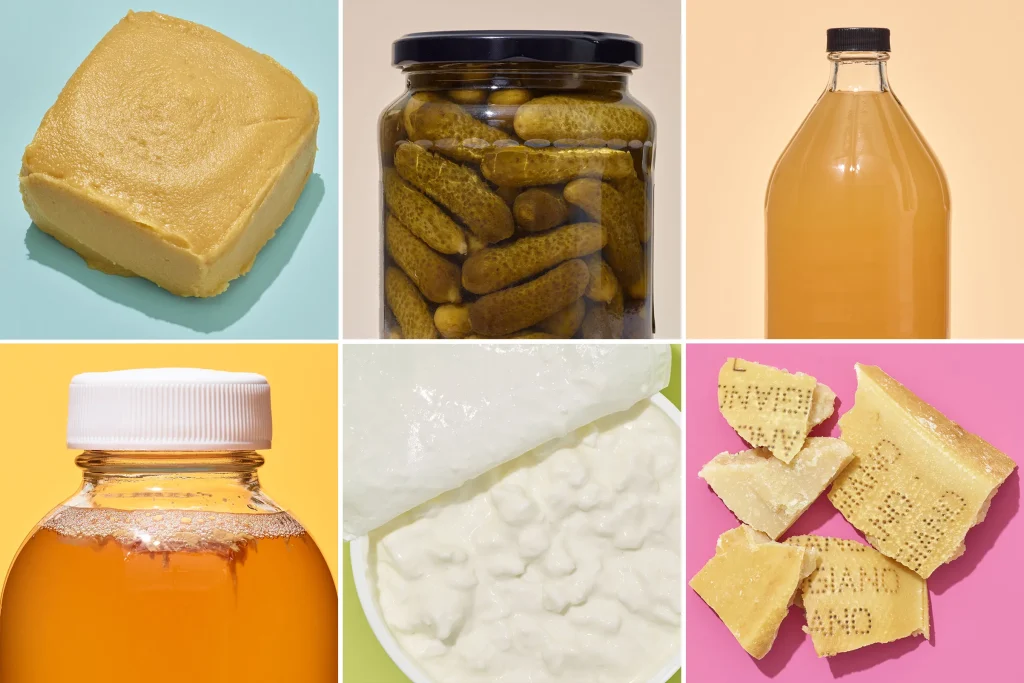When we talk about natural probiotics, we mean living microorganisms that are found in many foods without having to be artificially added. When provided properly, they help improve the health of the body, affecting the intestinal flora. What are the most outstanding probiotic-rich foods?
The Best Foods in Probiotics
Human flora is equipped with living bacteria that promote intestinal health and prevent the development of diseases. By consuming natural probiotics, we are adding living microorganisms to our body, which are very beneficial.
With them, the digestions get lighter and our immune system improves. In addition, they are a great ally to remove toxins from the body, resulting in a balanced metabolism.
The difference between natural and artificial probiotics is that these first ones develop through a natural fermentation process. You may consume some of them without knowing it, although from here we will name some of the most popular probiotic-rich foods to keep in mind:
1. Yogurt
Within the aliths rich in probiotics, yogurt is one of the most demanded in the world. However, not all of us in the supermarket serve, because to contain these living microorganisms must be natural, without being pasteurized. As an interesting fact, sheep and goat’s milk contain more probiotics than cow’s milk.
2. Kombucha
It is a not-too-well-known probiotic drink that is made from tea fermented by microorganisms named scoby. The natural kombucha does not have gluten, does not carry gas or added sugar, and is unpasteurized, being a 100% vegan drink.
3. Olives and Pickles
In Spain, we are fond of olives and pickles in the form of pickles, olives and so on. Well, these types of food contain living bacteria after the fermentation process of these plants.
4. Raw Cheese
The cheese made of raw milk, i.e. non-pasteurized, is rich in probiotics. As it happens that sheep’s cheese, goat cheese, and yogurt, have greater probiotic advantages than cows.
5. Tempeh
The origins of the tempeh are Hindu. It comes from soy fermentation and can be eaten in multiple ways, whether sautéed, baked, or raw in salads. It is widely used in vegan diets, being the perfect meat substitute.
6. Sauerkraut
The Sauerkraut is a well-known probiotic food, which is obtained through the fermentation of white cabbage or cabbage. Its flavor is acidic and has a crisp texture. As with other foods in this category, it is important that it has not been pasteurized.
7. Kefir
Kefir is a dairy obtained through the fermentation of certain yeasts and bacteria. It comes from Turkey and Russia, the milk kefir being one of the most popular. It is a food very similar to yogurt, although its elaboration is simpler and has a greater diversity of microorganisms.
8. Kimchi
The kimchi is obtained from the fermentation of vegetables, mainly from the cabbage. In Korea, it is often consumed, with meat and fish accompaniment. Garlic and pepper are added, hence its spicy flavor, its main difference from sauerkraut.
9. Miso
The miso is a paste made from the fermentation of soy, salt, and koji. Its texture is creamy, it has a coffee-like aroma, and tastes like meat. Miso soup is one of the best-known dishes for Asian cuisine lovers
10. Microalgae
They are a source of probiotics and other nutrients. In the Japanese diet, the consumption of this type of algae (kombu, chlorella, or spirulina) is usually common). It is possible to add them in broths, salads, or soups, and you can even make smoothies with them.
If you plan to add these natural probiotics to your daily diet, before you do, you should take prebiotics to take advantage to the fullest. Prebiotics are substances (mainly carbohydrates) that favor the spread of these living bacteria in our bodies.

